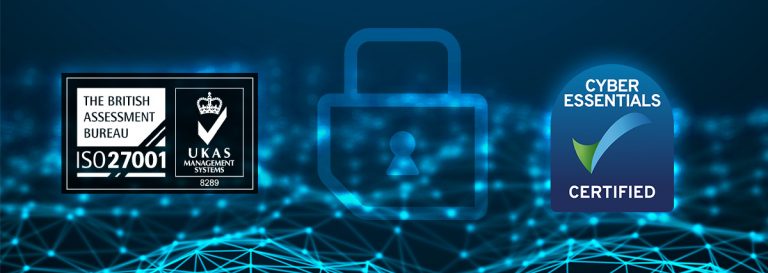6th January 2021 | Simon Trend, CTO
Securing IoT solutions

Simon Trend, Chief Technology Officer
With the ever-present threat of fraud to IoT, securing your solutions has never been more important. There are many considerations to take into account when approaching IoT security: what are the threats and vulnerabilities you should be aware of? How do you know your solutions are secure? And what are the steps that you need to take to minimise the risks?
We have put together this blog which will help you understand whether your devices and solutions are secure, as well as the steps that you and your business can take to mitigate the risks.
Where are the threats and what are your vulnerabilities?
The biggest threat to a business investing in IoT technology is its own attitude and commitment towards security. In some instances, businesses are leaving themselves open to potential threats due to a number of oversights, such as weak passwords, inadequate training or a lack of security awareness at the board table. In our experience, over 90% of security attacks come through simple vulnerabilities such as failing to change default security settings for routers (at setup or after reset) or not locking down solutions to only enable the key network services that are required.
These gaps stem from simple process deficiencies in either not following established practices or deviating from them, both of which can be kept in check if the organisation assumes the right attitude towards security. However, in order for security to be embraced as a concept, the change of attitude needs to come from the top, so that it permeates throughout the company culture.
Steps you can take to minimise the risks:
1. Assess if your solutions are secure
There are many free providers of product vulnerability scanners or cyberattack information that allow you to quickly identify how your solutions are affected. For example, it is free to download an IoT security assessment by the GSMA, which provides up to 85 tips to help secure an endpoint solution or device. The UK CiSP (Cyber Security Information Sharing Partnership) is also a trusted source of real-time security related information, that provides additional guidance to both small and large businesses.
To fully identify weaknesses within the business, many organisations hire companies that will actively attempt to ethically attack and breach their network. Alternatively, businesses could consider taking advantage of the free tools around email scamming. Ultimately, these tools will add to the data and knowledge needed to mitigate security issues when handling IoT connected devices.
2. Invest in people and processes
Investing in the people within your organisation is a great first step to promote the right mindset towards security. Employees are sometimes forgotten or left as the last line of defence when considering security controls, when they actually should play a key role at every point in the process. Good companies listen carefully to employees, before educating and preparing them to reduce and mitigate security risks.
The simplest and easiest way to do this is to appoint a senior leader of security matters and assign responsibilities clearly, whilst investing in formal security training and cross-company awareness programmes that continually improve and enhance the knowledge of all staff. Furthermore, certifications such as ISO27001 and CyberSecure show that you and your partners are taking the issue of IoT security seriously, ultimately creating an ecosystem of secure data management and processing.

3. Provide additional layers of security through standards and services
Ensuring that all devices and solutions are Secure By Design will provide fundamental layers of security that minimise the risk of intrusion. For example, a key aspect within cellular IoT solutions is to implement fundamental secure networking to and from devices. First and foremost, you should opt for mobile devices that allow you secure and encrypted connectivity through a private network. Secondly, using a private APN for connectivity will overcome a lot of vulnerability issues by keeping the data on private networks. These are just two steps, but there are many others that can be taken by businesses, including device authentication and encryption.
IoT technology has the potential to benefit many industry sectors, but security should always be a company’s first priority, especially in today’s market with new and ever-increasing sophisticated hacking techniques. It starts with adopting the correct mindset towards handing security, identifying the weakest points, before investing in your people (providing them with the right processes) and putting the right technology in place. Following these steps does not guarantee security for your applications, but they will minimise your risk in the long-term.
Keeping your data secure with Wireless Logic – from device to the end-application
Working with specialist partners like Wireless Logic, who are experts in these matters will help provide additional peace of mind when navigating the persistent set of IoT security threats.
Find out more about how we keep IoT solutions secure or get in touch.



